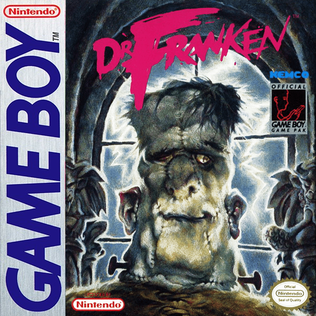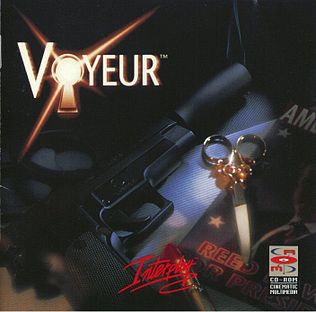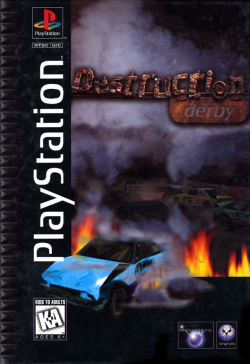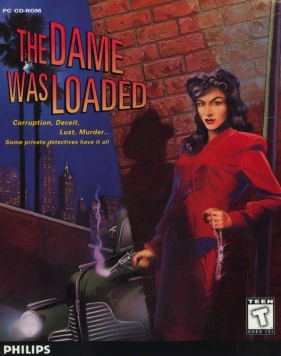
The Compact Disc-Interactive is a digital optical disc data storage format as well as a hardware platform, co-developed and marketed by Dutch company Philips and Japanese company Sony. It was created as an extension of CDDA and CD-ROM and specified in the Green Book specifications, co-developed by Philips and Sony, to combine audio, text and graphics. The two companies initially expected to impact the education/training, point of sale, and home entertainment industries, but the CD-i is largely remembered today for its video games.

Shigeru Miyamoto is a Japanese video game designer, producer and game director at Nintendo, where he serves as one of its representative directors as an executive since 2002. Widely regarded as one of the most accomplished and influential designers in video games, he is the creator of some of the most acclaimed and best-selling game franchises of all time, including Mario,The Legend of Zelda, Donkey Kong, Star Fox and Pikmin. More than 1 billion copies of games featuring franchises created by Miyamoto have been sold.

Fly! is a flight simulator video game for Windows and Macintosh developed by Terminal Reality and published by Gathering of Developers.

Dr. Franken is a platform game released in 1992 for the Game Boy and in 1993 for the Super Nintendo Entertainment System by Elite Systems. It was titled The Adventures of Dr. Franken for the SNES in the United States. The game features Franky, a Frankenstein's monster on a mission to collect the scattered body parts of his girlfriend, Bitsy.

Krome Studios Melbourne, originally Beam Software, was an Australian video game development studio founded in 1980 by Alfred Milgrom and Naomi Besen and based in Melbourne, Australia. Initially formed to produce books and software to be published by Melbourne House, a company they had established in London in 1977, the studio operated independently from 1987 until 1999, when it was acquired by Infogrames, who changed the name to Infogrames Melbourne House Pty Ltd.. In 2006 the studio was sold to Krome Studios.

Gathering of Developers, Inc. was an American video game publisher based in New York City. Founded by Mike Wilson and associates in January 1998 and originally based in Dallas, the company was acquired by Take-Two Interactive in May 2000. Between May 2000 and March 2001, Gathering of Developers also operated a division, On Deck Interactive, which acted as their mass market label. In August 2001, Take-Two Interactive closed Gathering of Developers' Dallas headquarters and moved the label in-house, to New York City. The label was shut down in September 2004, with all assets consumed by Global Star Software.

Mystery House is an adventure game released by On-Line Systems in 1980. It was designed, written and illustrated by Roberta Williams, and programmed by Ken Williams for the Apple II. Mystery House is the first graphical adventure game and the first game produced by On-Line Systems, the company which would evolve into Sierra On-Line. It is one of the earliest horror video games.

Voyeur is an interactive movie video game released in 1993 for the Philips CD-i. It was ported to MS-DOS compatible operating systems and Macintosh. A major selling point for the game was the "mature" content of the full-motion video sequences, with a number of simulated sex scenes.

Destruction Derby is a 1995 vehicular combat racing video game developed by Reflections Interactive and published by Psygnosis for MS-DOS, PlayStation and Sega Saturn. Based on the sport of demolition derby, the game tasks the player with racing and destroying cars to score points. The developers implemented simulated physics to make the results of collisions easier to predict, and they kept the game's tracks small to increase the number of wrecks. Critics found Destruction Derby enjoyable and praised its graphics and car damage system, although the Saturn release received mixed reviews. The game started the Destruction Derby series, beginning with its 1996 sequel, Destruction Derby 2.

Noctropolis is a 1994 MS-DOS third-person adventure game by Flashpoint Productions and published by Electronic Arts. The player assumes the role of the character Peter Grey, a lonely bookstore owner who winds up in the world of his favorite comic book. Grey discovers that he is destined to assume the role of his former comic book hero.

Clock Tower II: The Struggle Within, known in Japan as Clock Tower: Ghost Head, is a horror-themed adventure game developed by Human Entertainment and released for the PlayStation in 1998. It is the third game in the Clock Tower series. The story follows 17-year-old Alyssa Hale who occasionally is possessed by an alter ego named Mr. Bates. The player must guide Alyssa through various environments, altering between her normal and twisted personality, to uncover the secrets of her and her family's past.

Lode Runner Online: The Mad Monks' Revenge is an enhanced version of the 1994 game Lode Runner: The Legend Returns. The game includes online functionality so that players can battle or work together via network play. Despite the name, the game can be played as single-player and offline.

NASCAR Racing 2 is a video game developed by Papyrus Design Group and published by Sierra On-Line for Microsoft Windows and MS-DOS in late 1996. The game had an expansion, called NASCAR Grand National Series, released in late-1997.

Stronghold: Crusader is the successor to Firefly Studios's 2001 real-time strategy video game Stronghold. Crusader has much in common with the original Stronghold, but differs from its predecessor in the fact that the game is no longer set in England, instead being set in the Middle East during the Crusades. Another prominent addition not found in its predecessor is a skirmish mode in single-player, allowing customized battles with AI opponents instead of the linear campaign. The game was also released as Stronghold Warchest. This version was a compendium of Stronghold and an enhanced version of Stronghold: Crusader, containing additional characters and an additional Crusader Trail.

The Dame Was Loaded is a first-person point-and-click adventure game for MS-DOS and Macintosh created by Australian developer Beam Software. It was published in 1996 by Philips Interactive Media.
Elizabeth T. Danforth is an illustrator, editor, writer, and scenario designer for role-playing games and video games. She has worked in the game industry continuously since the mid 1970s.

A first-person shooter (FPS) is a video game centered on gun fighting and other weapon-based combat seen from a first-person perspective, with the player experiencing the action directly through the eyes of the main character. This genre shares multiple common traits with other shooter games, and in turn falls under the action games category. Since the genre's inception, advanced 3D and pseudo-3D graphics have proven fundamental to allow a reasonable level of immersion in the game world, and this type of game helped pushing technology progressively further, challenging hardware developers worldwide to introduce numerous innovations in the field of graphics processing units. Multiplayer gaming has been an integral part of the experience, and became even more prominent with the diffusion of internet connectivity in recent years.

Where in the U.S.A. Is Carmen Sandiego? is an educational video game released by Broderbund in 1986 and is part of the Carmen Sandiego series. The game is a sequel to 1985's Where in the World Is Carmen Sandiego?. A deluxe version with updated graphics and interface was released in 1992 and a remade version was released in 1996. The goal of the game is to track Carmen Sandiego's henchmen across the United States, arrest them, and ultimately arrest Carmen herself. The game received generally positive reviews but some critics compared it unfavorably with its predecessor game, which had a global perspective.

















